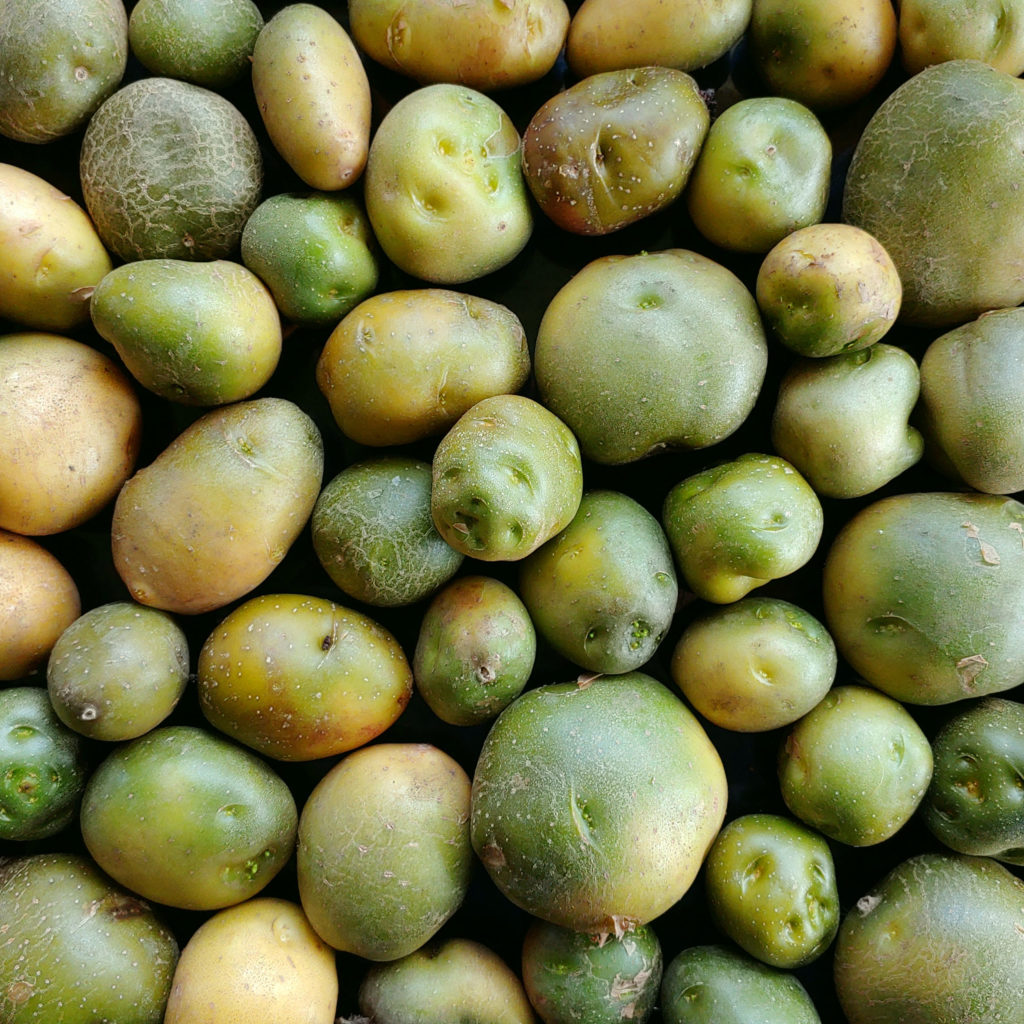potato (Solanum tuberosum)
Rotting Potato Gas Dangers: Myth or Reality?
Time for another frequently asked potato question. Actually, this is more of an occasionally asked question, but close enough.
Do you recall reading a news story about a Russian family who died in their root cellar due to toxic potato gas? This story regularly makes the rounds in gardening groups on social media and has generated a number of scare articles about the dangerous nature of the gasses produced by rotting potatoes, pointing to solanine as the culprit. The original article includes an info box about solanine, but does not claim that it was the cause of death. Some people have clearly connected the dots, which is not unreasonable given the way the article presents the information, and come to the conclusion that the solanine in the potatoes became a gas and poisoned the family. A particularly terrible MSU Extension article specifically claims this, but without providing any citation.
Solanine is one of the major potato glycoalkaloids, protective compounds that deter animals from feeding on potato foliage. Glycoalkaloids are toxic to mammals, including humans, but they are not normally found in a high enough concentration in tubers to be dangerous. I found the claim of solanine gas very suspicious because glycoalkaloids have high melting points. The melting point for solanine is 520 degrees F (271 C). It is not just going to turn into a cloud of gas in your root cellar.
There is a simpler explanation for what happened in this case. One of the major breakdown products from rotting potatoes and any other rotting vegetable is carbon dioxide. Carbon dioxide is heavier than oxygen and will displace it when there is no air movement. A root cellar, a space closed off below ground with limited air exchange, is the ideal place for carbon dioxide to pool. The family in this story was likely asphyxiated due to lack of oxygen, not poisoned by toxic gasses.
Either way, it is a tragedy, but there is no reason to worry about the decomposition gasses from potatoes under normal circumstances. They don’t produce gasses more toxic than any other rotting vegetation and the carbon dioxide will harmlessly disperse in an environment like a house or garage that has plenty of air circulation.


I saw this “solanine gas” on a video on YouTube and thought it seems like a really huge molecule to exist in gas form?
I saw it in a search result when I googled “why do rotting potatoes smell so bad” and it immediately sounded fishy to me for this reason. I took organic chem and I know molecules that big are almost never gases, especially polar molecules!
That is, hydrogen sulfide gas.
Yeah, that’s pretty rediculous, but then, the level of science illiteracy these days is dangerously high (the COVID-scare, and “climate change” B.S. being two recent examples!). If enough potatoes were wet enough, and packed tightly in a damp bin or in a tub with poor/no drainage, they would also generate very smelly anaerobic volatile organic compounds and maybe also hydrogen gas, which can be toxic.
Pingback: The Taters Have Eyes – Everything Inc.